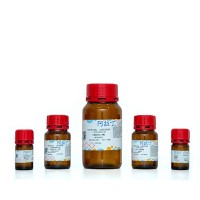Using PATIMDB to Create Bacterial Transposon Insertion Mutant Libraries
互联网
- Abstract
- Table of Contents
- Materials
- Figures
- Literature Cited
Abstract
PATIMDB is a software package for facilitating the generation of transposon mutant insertion libraries. The software has two main functions: process tracking and automated sequence analysis. The process tracking function specifically includes recording the status and fates of multiwell plates and samples in various stages of library construction. Automated sequence analysis refers specifically to the pipeline of sequence analysis starting with ABI files from a sequencing facility and ending with insertion location identifications. The protocols in this unit describe installation and use of PATIMDB software. Curr. Protoc. Mol. Biol. 86:19.7.1?19.7.34. © 2009 by John Wiley & Sons, Inc.
Keywords: transposon; mutant; library; PATIMDB; software; process tracking; pipeline
Table of Contents
- Introduction
- Basic Protocol 1: Installing and Configuring the PATIMDB Application and Helper Applications
- Basic Protocol 2: Mutant Library Setup
- Basic Protocol 3: Creating Plate Sets and Performing Processes with the PATIMDB Application
- Basic Protocol 4: Performing Automated Sequence Analysis with the PATIMDB
- Basic Protocol 5: Retrieving Plate and Mutant Reports
- Support Protocol 1: Installing Java 2 Platform Standard Edition on Windows Computers
- Support Protocol 2: Installing Java 2 Platform Standard Edition on Linux Computers
- Support Protocol 3: Updating to J2SE 5.0 on Mac OS X Computers
- Support Protocol 4: Installing MySQL Server and Client on Package‐Based Linux Systems
- Support Protocol 5: Installing MySQL Server and Client on Generic Linux‐, Mac OS X–, and Unix‐Based Computers
- Support Protocol 6: Installing MySQL Server and Client on Windows
- Commentary
- Literature Cited
- Figures
- Tables
Materials
Basic Protocol 1: Installing and Configuring the PATIMDB Application and Helper Applications
Materials
Basic Protocol 2: Mutant Library Setup
Materials
Basic Protocol 3: Creating Plate Sets and Performing Processes with the PATIMDB Application
Materials
Basic Protocol 4: Performing Automated Sequence Analysis with the PATIMDB
Materials
Basic Protocol 5: Retrieving Plate and Mutant Reports
Materials
Support Protocol 1: Installing Java 2 Platform Standard Edition on Windows Computers
Materials
|
Figures
-
Figure 19.7.1 Workflow to generate a transposon insertion mutant library. The PATIMDB Application is designed to work with the workflow developed by Liberati et al. (). Starting with putative transposon mutants on large‐format plates, colonies are transferred to 96‐well culture plates (WOR) and grown up in suitable media. Transfer of culture into 384‐well plates containing growth medium with glycerol produces master (MAS) and duplicate (DUP) plates. PCR template plates (SUP) are prepared by transferring culture into 96‐well plates followed by lysis at 95°C and centrifugation. Arbitrary PCR1 plates (AR1) are generated by transferring supernatant from SUP plates and performing the first round of arbitrary PCR. This PCR product is transferred as template to the arbitrary PCR2 plates (AR2) and the nested PCR step is performed. Lastly, transfer and cleanup produces the sequencing plates (SEQ), which are submitted to a sequencing facility. View Image -
Figure 19.7.2 PATIMDB Application Client Server Architecture. The PATIMDB Application, which is intended to be installed on a PC or workstation, is a client application for a MySQL database installed on a database server. Communication with the database server takes place over a network. View Image -
Figure 19.7.3 The first time the PATIMDB Application is launched, this message alerts the user that no configuration file exists. Clicking the OK button opens the PATIMDB Application configuration window. Clicking Cancel exits the application. View Image -
Figure 19.7.4 The PATIMDB Application configuration window allows configuration of the applications database connection. View Image -
Figure 19.7.5 The PATIMDB Application Main Window is the main interface of the PATIMDB Application. Functions are accessed through the various menus. View Image -
Figure 19.7.6 The User Manager is the interface for defining users of the PATIMDB Application. Define users with Owner privilege to enable password protection. View Image -
Figure 19.7.7 When password protection is enabled, users are prompted for their login and password when the PATIMDB Application starts. View Image -
Figure 19.7.8 The Analysis Settings interface allows users to configure paths to helper applications used by the PATIMDB Application for automated sequence analysis. Other analysis parameters may also be configured. See the PATIMDB Application documentation or click Help for more information. View Image -
Figure 19.7.9 The PATIMDB is a relational database with many entities that are dependent on one another. During Mutant Library Setup (), Organisms, Transposons, Mutant Libraries, Genome Sequences, and Genes are defined, and BLAST databases are exported. During plate creation (), Plates, Mutants, and Samples are created. During automated sequence analysis, raw sequences are imported, processed sequences are generated, and BLAST alignments are used to generate InsertGenome records. Although the BlastDB is not, strictly speaking, a PATIMDB database entity, it is included here to show its interrelationship with the various database tables. View Image -
Figure 19.7.10 Defining an organism is the recommended first step in defining a mutant library. The strain field is used as the unique primary key for organisms. Since the strain identifier is used in generating human‐readable barcodes (which can often only encode a limited number of characters), the strain identifier should be short, optimally four characters. View Image -
Figure 19.7.11 The Transposon Manager is the interface for defining transposons. The Transposon ID is used as the unique primary key for transposons. Since the Transposon ID is used in human‐readable barcodes, it should be short, optimally four characters. The other required fields in this window are the transposon search sequence (TnSearchSequence), TnMaxLevenshteinDistance, TnMaxPosition, and DefaultOffset. View Image -
Figure 19.7.12 The Mutant Library Manager is the interface for defining mutant libraries. The Library ID is the unique primary key. Other required fields are Creation Data, Library Creator, Transposon (as defined in the Transposon Manager), and Host Organism (as defined in the Organism Manager). View Image -
Figure 19.7.13 The Genome Sequence Manager allows users to define genome sequences by importing a FASTA format sequence file and associating the contained sequence with a particular bacterial strain (as defined in the Organism Manager). These genome sequences will be used later for BLAST analysis. View Image -
Figure 19.7.14 The Gene Manager allows users to import a file containing gene identifiers, starts, ends, strands, and sequences. This data allows the PATIMDB Application to determine which genes have been interrupted by a transposon insertion mutant insertion. See the PATIMDB Application documentation for more information on the required TSV file format. View Image -
Figure 19.7.15 During import of gene records from GenBank, GFF, and GTF files, the Genes File Import Dialog window appears, allowing users to specify which type of feature to import into the database and which unique identifier to use as a database key. These file formats contain gene, CDS, rRNA, and other feature types that may share unique identifiers, such as locus_tags. Since “gene” is the most general of these feature types, it is generally sufficient to select the defaults, “gene” and “locus_tag.” View Image -
Figure 19.7.16 The BLAST Database Manager allows users to specify which genome sequences to export and format as a BLAST database. Only these exported genome sequences will be used during automated sequence analysis. View Image -
Figure 19.7.17 The Plate Set Creator allows users to create virtual plates for a given mutant library. View Image -
Figure 19.7.18 The Execute A Process window is the main process tracking interface of the PATIMDB Application. View Image -
Figure 19.7.19 In the Sequence Analysis interface, users can perform automated sequence analysis on sets of genome sequences. Users must select the directory containing the source sequence files and the source file type. View Image -
Figure 19.7.20 Automated Sequence Analysis Pipeline. The pipeline that the PATIMDB Application uses to perform automated sequence analysis begins with ABI files as input. Phred is used to perform base‐calling and quality assessment, generating sequence (.SEQ) and quality (.QUAL) files as output. The PATIMDB Application then performs transposon matching, and the sequence, quality, and transposon data are stored in the database. The PATIMDB Application uses the Phred quality data to trim the sequence, removing low‐quality sequence from the 5′ end, and the resulting processed sequence is exported as .PSEQ files and used as the query for BLASTN against the genome sequence. The processed sequence and the resulting BLAST results files are imported into the database. The BLAST results, together with the transposon matching data, are used to determine the genomic location of the transposon insertion, as well as which genes are disrupted by that insertion. In this figure, analysis pipeline processes are represented as solid, black arrows, whereas insertions of data into the database are represented as dashed, gray lines. View Image -
Figure 19.7.21 The Reanalyze Sequences interface allows users to repeat automated sequence analysis on reads that are already in the database. View Image -
Figure 19.7.22 The Plate Selector window allows users to select plates to view by plate type, plate ID, and label. View Image -
Figure 19.7.23 In the Report for Plate window, users may view information about selected plates. Mutant reports may be retrieved by clicking wells in the plate map graphic. View Image -
Figure 19.7.24 The Mutant Report interface contains information about individual mutants. View Image
Videos
Literature Cited
| Literature Cited | |
| Cameron, D.E., Urbach, J.M., and Mekalanos, J.J. 2008. A defined transposon mutant library and its use in identifying motility genes in Vibrio cholerae. Proc. Natl. Acad. Sci. U.S.A. 105:8736‐8741. | |
| Caetano‐Anollés, G. and Bassam, B.J. 1993. DNA amplification fingerprinting using arbitrary oligonucleotide primers. Appl. Biochem. Biotechnol. 42:189‐200. | |
| Garsin, D.A., Urbach, J., Huguet‐Tapia, J.C., Peters, J.E., and Ausubel, F.M. 2004. Construction of an Enterococcus faecalis Tn917‐mediated‐gene disruption library offers insight into Tn917 insertion patterns. J. Bacteriol. 186:7280‐7289. | |
| Jacobs, M.A., Alwood, A., Thaipisuttikul, I., Spencer, D., Haugen, E., Ernst, S., Will, O., Kaul, R., Raymond, C., Levy, R., Chun‐Rong, L., Guenthner, D., Bovee, D., Olson, M.V., and Manoil, C. 2003. Comprehensive transposon mutant library of Pseudomonas aeruginosa. Proc. Natl. Acad. Sci. U.S.A. 100:14339‐14344. | |
| Liberati, N.T., Urbach, J.M., Miyata, S., Lee, D.G., Drenkard, E., Wu, G., Villanueva, J., Wei, T., and Ausubel, F.M. 2005. An ordered, nonredundant library of Pseudomonas aeruginosa strain PA14 transposon insertion mutants. Proc. Natl. Acad. Sci. U.S.A. 103:2833‐2838. | |
| Liberati, N.T., Urbach, J.M., Thurber, T.K., Wu, G., and Ausubel, F.M. 2008. Comparing insertion libraries in two Pseudomonas aeruginosa strains to assess gene essentiality. In Methods in Molecular Biology Vol 416: Microbial Gene Essentiality: Protocols and Bioinformatics (S.Y. Gerdes, J.‐I. Kato, B.D. Peyser, R. Irizarry, F.A. Spencer, T. Baba, and H. Mori, eds.) pp 153‐169. Humana Press, Totowa, N.J. | |
| Vastrik, I. 2008. Installing a local copy of the reactome Web site and database. Curr. Protoc. Bioinform. 9:10.1‐9.10.9. |






